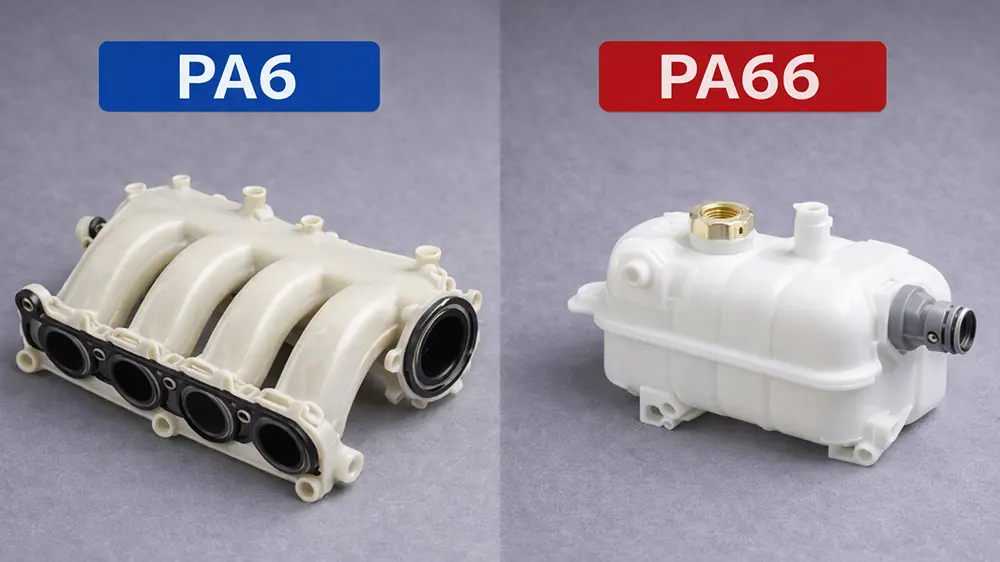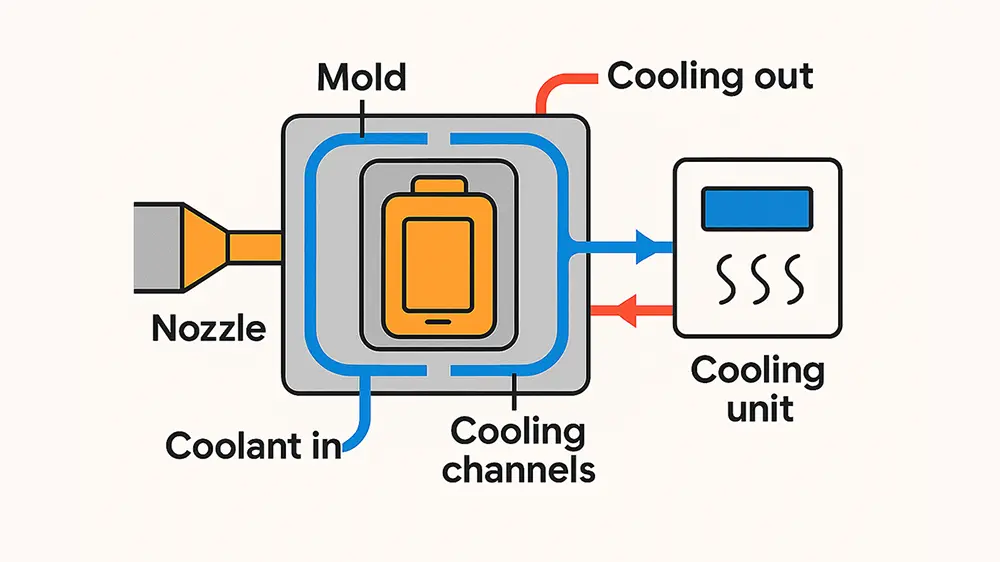Custom CNC machining has revolutionized the production of medical parts, providing unprecedented precision. And reliability crucial for the healthcare industry. As medical technology evolves, so does the need for intricate components that meet strict regulatory standards. This guide delves into the pivotal role of CNC machining in the medical sector.
This book offers an overview of its applications, from essential medical equipment to innovative medical products. It highlights the sophisticated machining processes involved in CNC milling and the unique precision machining requirements for medical manufacturing. The adaptation of CNC technology has been rapid, especially in responding to healthcare challenges. Ensuring that CNC medical parts are high-quality and meet the urgent medical care demands.
By exploring the various facets of machining for the medical industry. This blog post provides valuable insights into CNC machining services tailored specifically for healthcare. In this blog post, you will discover how these advanced techniques contribute to the development and reliability of critical medical devices. Setting new standards in the medical product landscape. Stay tuned to learn more about the precision medical solutions that CNC machining can offer.
Why Medical Industries Rely on CNC Machining?
The medical manufacturing industry heavily relies on CNC machining for its exceptional ability to deliver precision. And maintain tight tolerances, essential for the intricate nature of medical devices and components. CNC medical machining offers unmatched flexibility, enabling the customization of materials. And components crucial for patient-specific needs, such as medical implants.
Precision CNC is cost-effective for small batch productions and ensures quick turnaround times, a critical factor during medical emergencies. CNC machining ensures that each component meets rigorous cleanliness, accuracy, and sterility standards. Whether for prosthetic devices or surgical instruments.
This faster and more precise process than manual machining is indispensable in creating high-quality, reliable medical products tailored to a patient’s unique anatomy and requirements.
Key Applications of CNC Machining in Medicine
CNC machining is a cornerstone in the medical industry, fostering innovation and precision in healthcare technology. This advanced manufacturing process ensures that medical devices are produced with the highest accuracy and quality, meeting stringent medical standards.
Here’s how CNC machining caters to critical applications in medicine:
- Production of Medical Devices: CNC machining crafts components for complex devices like MRI machines and pacemakers, ensuring operational precision and reliability.
- Manufacturing of Surgical Tools: Precision machining services create sharp, durable surgical instruments such as scalpels and forceps.
- Custom Parts for Prosthetics and Implants: CNC technology excels in producing tailored components that fit individual patient needs, from prosthetic limbs to orthopedic implants.
CNC machining for the medical sector is instrumental in pushing the boundaries of what is possible in medical treatment and surgery. By leveraging precision medical machining, healthcare professionals can rely on the utmost accuracy of medical device components. From electronic casings in diagnostic machines to critical surgical tools.
This technology enhances the functionality and safety of medical apparatus and ensures that each patient receives the most advanced care possible. With CNC machining services, medical practitioners can ensure their medical equipment meets the complex demands of modern medicine.
Advanced Materials Used in Medical CNC Machining
Advanced materials are pivotal in medical CNC machining, offering tailored properties. That enhances the functionality and safety of medical devices. These materials are selected based on their mechanical properties, biocompatibility, and suitability for various medical applications.
As medical manufacturers continually push the boundaries of what’s possible, the choice of material becomes crucial in designing and producing precision medical components. Below we explore some key materials used in this highly specialized field.
- Metals:
- Stainless Steel: Renowned for its durability and exceptional corrosion resistance, stainless steel is the go-to for surgical tools. Its strength ensures long-lasting performance in demanding sterilization environments, making it indispensable for medical machining services.
- Titanium: This metal stands out for its outstanding biocompatibility, crucial for implants and prosthetic components. Titanium’s compatibility with body tissues makes it a preferred choice for long-term applications in the human body, ensuring patient safety and comfort.
- Aluminum and Magnesium: These metals are valued for their lightweight nature, making them ideal for non-implantable devices. Their use significantly reduces the overall weight of medical devices, which can enhance the ergonomic experience for both medical practitioners and patients.
- Plastics and Polymers:
- PEEK and Acrylic: Both materials are noted for their high strength and excellent chemical resistance, making them suitable for items that come into temporary contact with patients. PEEK, in particular, is resistant to repeated sterilization cycles, which is vital for maintaining safety standards in medical environments.
- Delrin and PTFE: These polymers are celebrated for their stability and precision in manufacturing processes. Delrin offers high-tolerance machining capabilities, while PTFE’s low friction coefficient makes it ideal for surgical instruments, where precision and reliability are paramount.
Each of these materials uniquely contributes to medical devices’ effectiveness and reliability. CNC machining can produce components that meet exact specifications and tolerances, essential for the demanding nature of medical applications.
Components may require complex geometries and ultra-precise dimensions through medical CNC machining services, which are achievable with the advanced capabilities of CNC technology. This ensures that every component meets and exceeds the rigorous standards medical manufacturers require.
Design Considerations for CNC Machined Medical Parts
Designing CNC machined medical parts requires meticulous consideration to ensure they meet the high standards necessary for medical applications. Here are key design considerations for creating reliable and efficient CNC-machined medical components:
- Simplicity and Maintainability:
- Opt for simple designs that are easy to manufacture and maintain, enhancing medical device reliability.
- Incorporate features like large fillets and standard chamfers to facilitate easier cleaning and maintenance.
- Sterilization and Biocompatibility:
- Select materials that are strong, wear-resistant, and capable of withstanding repeated sterilization processes.
- Ensure materials used are biocompatible for long-term contact with the human body, crucial for implants like artificial joints and prosthetic devices.
- Visual Aesthetics and Traceability:
- Employ solid and distinguishable colors to improve usability and help healthcare providers quickly identify the right tools.
- Design parts to be aesthetically pleasing while maintaining functionality, which can improve patient and practitioner interaction with the medical device.
- Precision and Manufacturing Techniques:
- Advanced CNC machining techniques, such as 5-axis CNC milling, must be utilized to achieve the precision needed for complex medical components.
- Design parts considering the machining process, ensuring that tools of the largest diameter possible can be used for efficient and precise machining.
- Optimized Design Features:
- Limit internal cavities to no more than four times deeper than their width and round internal corners to reduce stress concentrations and facilitate easier machining.
- Avoid unnecessary aesthetic features that do not add functional value and could complicate the machining process.
By adhering to these guidelines, medical device manufacturing can produce high-quality, functional, and reliable precision components, meeting the medical industry’s critical needs.
Challenges and Innovations in Medical CNC Machining
CNC machining is a cornerstone in manufacturing medical device parts. Where precision and reliability are paramount. This technique, especially standard and Swiss CNC machining, ensures medical components meet exact specifications. Swiss CNC is particularly notable for its ultra-precise components. Which are crucial for various medical applications.
Challenges such as machining chatter pose significant risks. These vibrations can leave chatter marks on components for medical devices or even damage the CNC machinery, leading to scrapped parts. Adapting to such issues demands innovations like advanced CAD/CAM software. Which aids in the intricate design of medical parts and reduces potential errors during machining.
Medical device machining must comply with stringent regulatory standards, which vary significantly across countries. This can introduce delays and inflate costs, complicating the manufacturing process. Ergonomic concerns persist, with CNC operations linked to musculoskeletal issues among operators, necessitating ergonomic interventions to safeguard worker health.
CNC machining employs new techniques and technologies to navigate these hurdles, ensuring the efficient production of medical components that meet the required standards.
Selecting the Right Materials for Specific Medical Applications
Selecting the right materials for medical applications involves assessing several criteria to ensure safety, efficacy, and durability. Here’s a step-by-step guide:
- Assess Part Function and Exposure: Various medical devices require materials that can perform under specific conditions. For instance, materials used in life-saving medical implants must be biocompatible and able to withstand body fluids, whereas external devices may need different properties.
- Comparative Analysis of Metals and Plastics: Metals are often used for strength and durability in surgical tools and implants. Precision CNC machining allows for intricate designs in metals like titanium, which is widely appreciated in the medical field for its strength and lightweight properties. Plastics, on the other hand, offer flexibility and are often cost-effective for disposable items. Swiss machining processes are pivotal in producing medical components with the necessary precision.
- Considerations for Sterilization and Longevity: CNC machining does not require extensive tooling changes, which helps maintain the sterility and integrity of machined parts. The choice of material must consider how sterilization methods, such as autoclaving or chemical disinfectants, will affect the longevity and performance of the component. Materials must resist these processes without degrading.
- Material and Performance Properties: Each material offers distinct advantages. ABS is commonly used in the medical industry for its durability and flexibility, making it ideal for prototypes requiring rigorous testing.
- Cost Efficiency: Managing costs while maintaining quality is crucial in the medical industry. CNC machining allows for the production of high-quality parts without needing costly molds, making it a preferred method in the medical sector.
- Compatibility with Sterilization Methods: Early integration of material compatibility with expected sterilization techniques into the design and prototyping phases is essential. This ensures the final product can be repeatedly sterilized without functional degradation, adhering to medical safety standards.
Through careful selection based on these criteria, manufacturers can ensure that each medical component meets the medical field’s stringent requirements and contributes to medical technology’s advancement and reliability.
Conclusion
Future outlook and the continuing evolution of CNC technology in healthcare.CNC machining has solidified its critical role in the medical industry, demonstrating unparalleled precision and versatility in producing medical components that save lives and enhance healthcare quality.
This technology’s adaptability, particularly in Swiss machining, allows for the creation of intricate parts necessary for the complex machinery commonly used in the medical field. The future outlook for CNC technology in healthcare is promising, driven by continual advancements that enhance its precision and efficiency. As CNC machining does not require extensive tooling changes.
It stands at the forefront of innovation, ready to meet the evolving demands of medical manufacturing. The integration of CNC machining in various medical applications underscores its indispensable contribution to modern medicine, promising a future where its capabilities align more with the medical sector’s life-saving goals.





